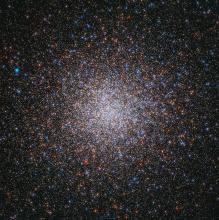Listen to today's episode of StarDate on the web the same day it airs in high-quality streaming audio without any extra ads or announcements. Choose a $8 one-month pass, or listen every day for a year for just $30.
You are here
Mergers
Galaxies are like businesses: They grow bigger through mergers, with the big guys gobbling up the smaller ones.
Our home galaxy, the Milky Way, is a prime example. It’s an amalgam of many galaxies — perhaps hundreds of them. These mergers have pumped up the Milky Way to gigantic proportions. It spans a hundred thousand light-years or more, and consists of hundreds of billions of stars.
Astronomers have detected remnants of many of the smaller galaxies the Milky Way has gobbled up. They form streamers of stars that can stretch across thousands of light-years. The stars in a streamer all follow the same path, and they have a similar composition. That suggests that the stars were born elsewhere, then incorporated into the Milky Way.
One of the biggest mergers happened when the galaxy was just a few billion years old. Astronomers found its remains in observations by Gaia, a European space telescope. The craft found tens of thousands of stars that move in the opposite direction from most of the Milky Way’s stars. The stars also have slightly different make-up. Even though they’re found throughout the entire galaxy, the stars probably were born elsewhere, then consumed by the Milky Way
The original host galaxy of these stars probably was about a quarter the mass of the Milky Way when they merged — about 10 billion years ago. Today, it still hasn’t been fully absorbed by the larger galaxy, so it preserves hints of the Milky Way’s hectic past.
Script by Damond Benningfield




